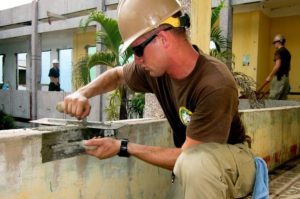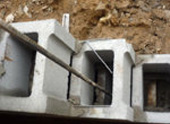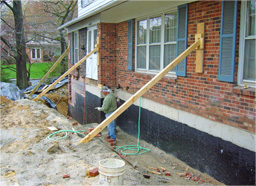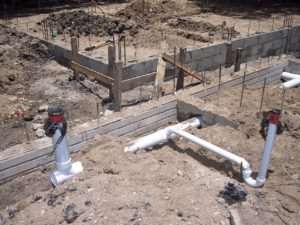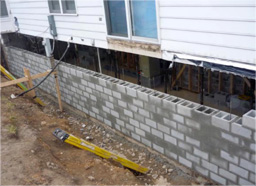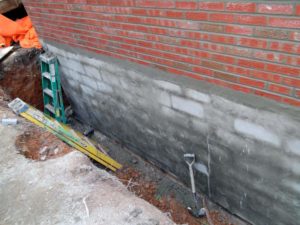You see cracks in your foundation. The doors and windows are not closing all the way. There are water stains on the walls. The drywall is damp and moldy. And your basement smells musty…like a vacant prison cell.
It’s pretty clear your home’s foundation needs repair. You don’t have any more time to put it off now. A home foundation repair contractor and possibly a structural engineer needs to be hired to design and deliver a correct repair plan.
So, all you need to do now is pick up your smart phone and call whichever contractor comes to the top of your Google search results, right!?
Not exactly.
In fact, if this foundation repair has not been addressed, it can wait a few days or weeks until you have taken a few well-planned steps.
Here are 6 things to do before you choose you foundation repair contractor:
- Research “home foundation repairs”: Educate yourself on what is happening to your foundation. Learn about what a home foundation contractor does and how they make repairs. (Read our blog on foundation repair.)
- Does the contractor actually do foundation repairs? : There are many contractors out there, some reputable and some not so reputable. In fact, there are many building contractors out there, you might think that any contractor can do it. That would be a huge mistake. Only choose contractors who specialize in repairing foundations. If the contractor does it “on the side” then delete them from your list.
- Contractor licensed and insured: This one should be easy to find out. Any home foundation contractor should be licensed and insured. You can check with your state licensing board, in Maryland is the Maryland Home Improvement Commission to see if they have the correct license to work on your home . Check for complaints Ask for a certificate of insurance [ COI] prior to starting any work. You want to make sure contractor has Workmans Comp Ins and Liability insurance.
- Warranty: Most contractors offer warranties on their repairs. Ask for one and get the written list of what the contractor covers.
- Landscaping issues: Find out if any of your shrubbery, trees or other landscaping will be need to be removed. You will have to add that into the cost.
- Get three references: Any reputable, licensed contractor should have at least three satisfied customers. Get their names and contact information. Also, check their Facebook and Yelp pages for reviews.
Now you have done your homework. Hire the best home foundation repair contractor you can find from your research.
Once you have hired them, get a written agreement on what they will be doing with the total estimate on the cost. Then, arrange to have them start the project.
Hiring a home foundation contractor can be agonizing as you need to get the project under way. However, it is worth the time and the effort.
M Taylor Enterprise is an experienced, licensed and respected home foundation contractor in the Silver Spring, Maryland, Montgomery County, Maryland, Prince George’s County, Maryland and parts of Howard County MD area. We will visit your home or business, diagnose the problems and give you an estimate. We get the job done quickly and efficiently. Call us at (301) 649-3406 or email us at matt@mtaylorenterprise.com.


